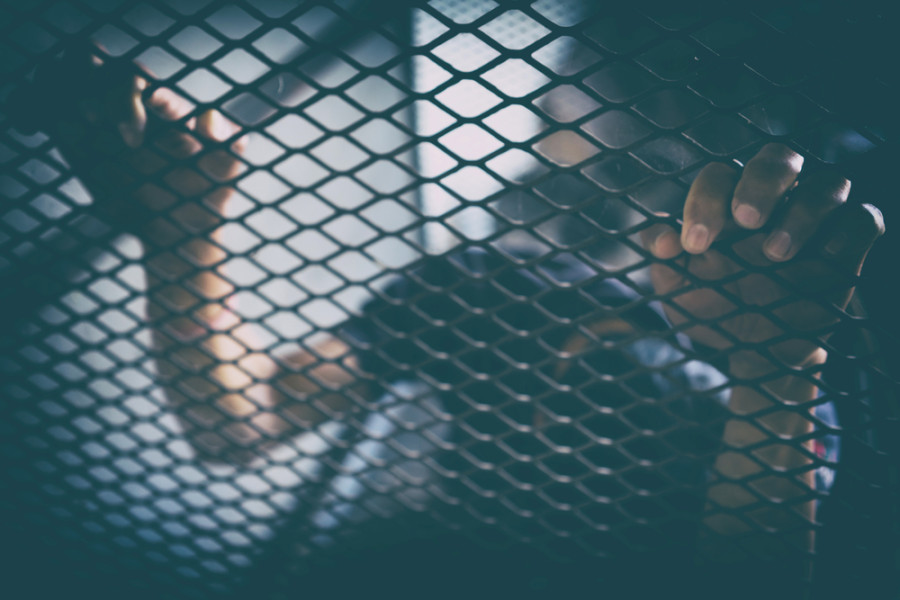National
Most traffickers are relatives of victims, officials say
Police in the past four fiscal years have rescued 2,333 trafficked persons, statistics show.
Shuvam Dhungana
On November 24, the Nepal Police Anti-Trafficking Bureau received a message on its Facebook page from a distraught father whose daughter had been trafficked to India.
The bureau contacted the family of the fifteen-year-old girl the next day and assured them that it would bring the teenager home safe.
The bureau discovered the girl at a brothel in Rani Bagh, New Delhi, with the help of Indian police. She was finally reunited with her family.
The girl had left for India nearly three years ago with her sister-in-law, who had promised her a well-paying job.
“We learned from the girl that her sister-in-law had sold her to a brothel operated by a Nepali woman,” said Deputy Superintendent of Police Sudheer Raj Shahi, an investigating officer at the bureau.
The girl’s sister-in-law, Simran Tamang, and the brothel operator, Junu Khadka, are now in police custody.
“The two women are being held for further investigation, and they will be charged with human trafficking,” Superintendent of Police Gobinda Thapaliya, spokesperson for the bureau, told the Post.
It was the latest case in a series of incidents where the trafficker and victim knew each other.
“We get many cases where the traffickers are family friends or relatives of the victims,” Deputy Inspector General of Police Bishwaraj Pokharel, spokesperson for Nepal Police, told the Post.
Pokharel explained that when the trafficker is a family friend or a relative of the victim, no one is going to suspect that person’s intention.
“When victims wholeheartedly trust their traffickers, they could travel anywhere with hardly anyone raising any suspicion. They could cross the border right under the nose of the border police,” Pokahrel said.
Trafficking cases where the trafficker and the victim are either related or seem to know each other well are difficult to prevent, authorities say.
Most of such cases remain under the radar for a long period because the victims’ families— most of whom are poor— are under the impression that their loved ones are working or studying, safe and better off than in their own homes.
In one such recent incident, the Anti-Trafficking Bureau on November 13 arrested a woman from Kathmandu’s Budhanilkantha based on a complaint filed by a young woman who had been sold into the sex trade in India in 2012.
An investigation later revealed that the accused woman, fifty-year-old Krishna Maya Lama, was a distant relative of the victim who was only fifteen when she was trafficked.
Lama had lured the girl, who was then working at a hotel in Kathmandu, with money and the promise of schooling. Once they reached India, Lama allegedly drugged the girl and sold her to brothel agents.
For seven years, the incident had gone unnoticed. Police believe there could be hundreds of such stories untold, unreported or unknown.
In the past four fiscal years, Nepal Police in coordination with various social organisations rescued 2,333 trafficking victims. Out of them, 520 were girls under eighteen.
Authorities arrested 227 people on human trafficking charges in the fiscal year 2015/16. The arrest numbers rose to 274 the following fiscal year and to 376 in the next. In the fiscal year 2018/19, 245 human traffickers were arrested.
The authorities do not have any specific data on how many trafficking victims were either related or knew their traffickers well. But a number of investigating officers and the people working in the anti-trafficking field that the Post contacted said such cases are commonplace not just in Nepal, but in other parts of the world as well.
According to the Transitional Organized Crime Threat Assessment conducted by the UN in the Czech Republic, Poland and Romania, the majority of trafficking victims are recruited through acquaintances, friends or relatives.
Balkumari Rana, president of the anti-trafficking nonprofit Shakti Samuha, says even if traffickers are strangers, they gain the trust of their victims and their families through mutual friends or social media.
“Many times the traffickers turn out to be relatives and acquaintances because it is easy for them to win their victims’ trust,” Rana told the Post.




 11.12°C Kathmandu
11.12°C Kathmandu















